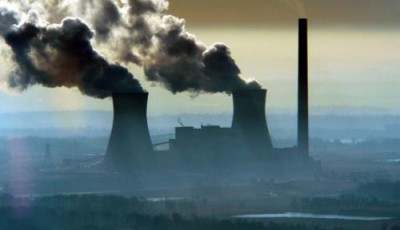New study finds China’s emissions likely to peak by 2025

Air pollution has created dangerously unhealthy living conditions in many of China’s major cities
The authors of the paper, Fergus Green and Professor Lord Nicholas Stern, find that, although President Xi Jinping has agreed publicly to reduce emissions by 2030, China’s emissions will likely begin to decline by 2025.
China has grown rapidly – often at double-digit rates – for more than three decades by following a strategy of high investment, strong export orientation and energy-intensive manufacturing.
While this growth lifted hundreds of millions out of poverty, it also heightened problems of inequality – personal, regional and urban-rural – and intensified pollution, congestion and greenhouse gas (GHG) emissions.
Recognising these difficulties, as well as the maturation of China’s economy in terms of skills, productivity and rising wages, and slower growth in some of China’s traditional export markets, the economic strategy has changed.
China has now entered a new phase of economic development – a “new normal” – focused on better quality growth. From structural changes in the economy to explicit policies on efficiency, air pollution and clean energy, China’s new development model is continuing to promote economic growth while driving down its GHG emissions.
Key findings
- China is moving decisively to a “new normal” – a development model based on the notion of better quality growth.
- Under China’s new development model, its GHG emissions are likely to peak by 2025, and could well peak earlier than that.
- China’s transformation has profound implications for the global economy, and greatly increases the prospects for keeping global GHG emissions within relatively safe limits.
- To reduce its emissions at a rapid rate, post-peak, China will need to deepen its planned reforms in cities and in the energy system, supported by a concerted approach to clean innovation, green finance and fiscal reforms.
The paper states: “Analysing trends in the key emitting sectors, we conclude that China’s greenhouse gas emissions are unlikely to peak as late as 2030 — the upper limit set by President Xi Jinping in November 2014 — and are much more likely to peak by 2025. They could peak even earlier than that.”
The authors find that, if China’s greenhouse gas emissions peak by 2025, they would reach between 12.5 and 14 billion tonnes of carbon dioxide equivalent. This finding suggests it is increasingly likely that the world will avoid global warming of more than 2°C above pre-industrial levels.
The paper states: “China’s transformation has profound implications for the global economy, and greatly increases the prospects for keeping global greenhouse gas emissions within relatively safe limits.”
However, the paper notes: “Whether the world can get onto that pathway [and limit global warming to no more 2°C] in the decade or more after 2020 depends in significant part on China’s ability to reduce its emissions at a rapid rate, post-peak (as opposed to emissions plateauing for a long time), on the actions of other countries in the next two decades, and on global actions over the subsequent decades.”
The authors find that structural economic changes and recent Chinese government policies have combined to cause a “remarkably rapid shift” in the trajectory of China’s emissions.
China’s political culture may explain why China’s government erred on the side of caution when pledging publicly to reduce emissions.
The paper states: “China’s international commitment to peak emissions ‘around 2030’ should be seen as a conservative upper limit from a government that prefers to under-promise and over-deliver. It must be remembered that China’s pledge includes a commitment to use ‘best efforts’ to peak before 2030; we are beginning to see the fruits of China’s best efforts.”
It adds: “The United Nations Climate Change Conference in Paris later this year will be more successful if governments everywhere understand the extent of change in China, its implications for global emissions, and the positive impact that China’s clean industrial development, investment and innovation plans are likely to have on global markets for clean goods and services (and the adverse implications for exporters of coal and certain other raw materials).”
The full report is available here.







